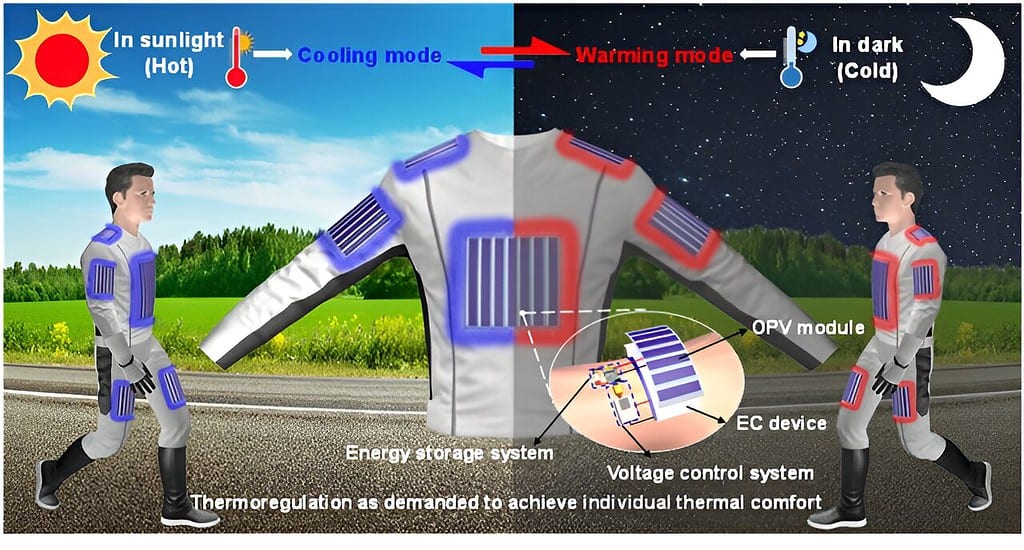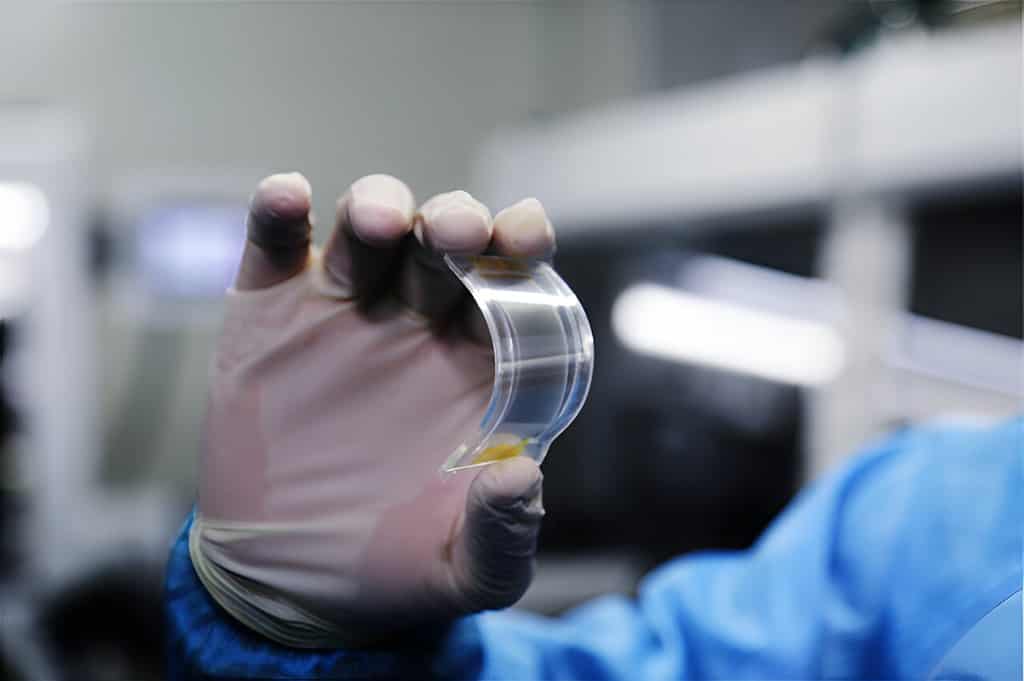
Soon the Apple Watch you have on your wrist might not be the most technologically advanced part of your wardrobe.
In a development that could redefine the landscape of wearable technology, researchers have introduced an innovative solar-powered clothing system. According to a study published in Science, this new technology combines a flexible solar cell with an electrocaloric device. This makes it possible for the device to adapt to changes in the temperature of its surroundings. It promises not only enhanced comfort and safety but also supports human endurance in extreme environments such as the Arctic, deserts, or space.
Current thermoregulatory clothing falls into two categories: passive and active systems. Passive systems, like radiative cooling and phase change materials, require no external energy but typically offer unidirectional temperature regulation. In contrast, active systems provide rapid adjustments but often need substantial power and bulky equipment, limiting their everyday practicality.

Enter the solution proposed by Nankai University’s Ziyuan Wang and his team: an all-day, solar-powered bidirectional thermoregulatory clothing system. This combines a type of solar panel made from organic materials and a special device that can heat up or cool down.
Building on previous work, the researchers developed microfiber-based meta-fabrics offering radiative cooling during daylight hours.
These components merge into a single, flexible unit, seamlessly integrating into conventional clothing fabrics. This means clothes can harness solar energy and use it to either warm up or cool down as needed. The beauty lies in its self-sufficiency, drawing power solely from sunlight, thereby eliminating the need for external power sources.
The device maintains human skin temperature within a comfortable range of 90-97 degrees Fahrenheit (32 – 36 degrees Celsius), even when environmental temperatures fluctuate between 54.5-99.7 F (12.5 – 37.6 C).
The technological implications are far-reaching, enhancing comfort and safety for individuals in diverse environmental conditions and is a step towards a more sustainable and energy-efficient future in clothing design and application.
So, how fancy is that Apple Watch looking now?






